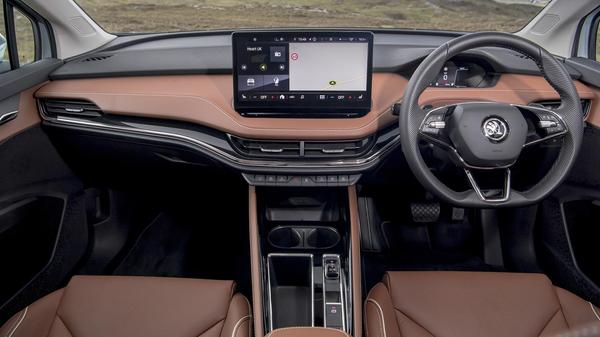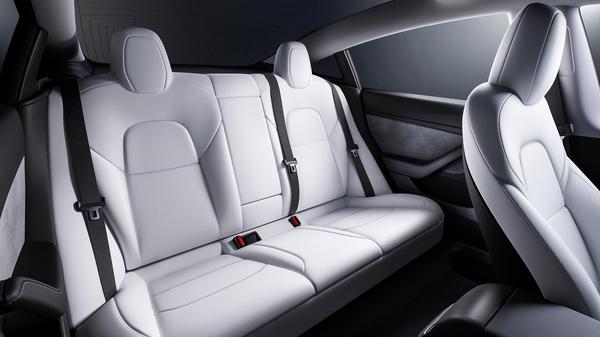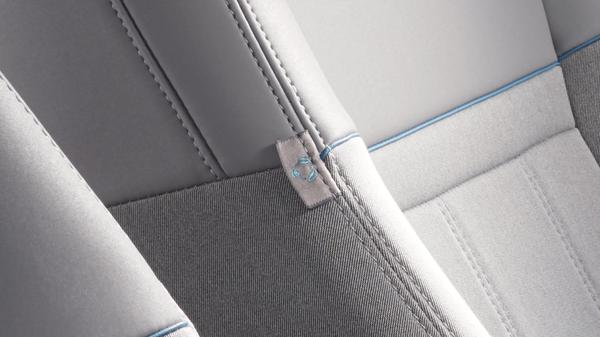News
Sustainability Newsletter - May 2023
What upholstery will you be choosing for your next car - leather or pleather?


Words by: Erin Baker
Published on 4 May 2023 | 0 min read
Vegan interiors have become A THING in recent years, especially for those concerned about animal welfare and/or the environment. Tesla really popularised the trend, and it has steadily spread through the industry and many brands now offer the option, or even make a point of it. This is especially true for electric models, partly because synthetic leathers are often lighter than the real thing to the benefit of range but also because the perceived eco-sensibility sits well with buyers of zero emissions cars.
But is a vegan interior really better for the environment than a leather one? The short answer is a resounding no. Most ‘pleather’ materials - leather alternatives - are created from plastics such as PVC, which in turn are created from oil. Anyone sense we’re going full circle here? They don’t biodegrade and, as a result, enter our air, land and marine environments as micro particles, where they either sit for decades or are ingested by wildlife. So it’s not a very animal-welfare-based solution. Tesla won’t comment on what its vegan-friendly materials are made from, but plastic seems to be a large component, especially if you have a relatively old Tesla.
But is a vegan interior really better for the environment than a leather one? The short answer is a resounding no. Most ‘pleather’ materials - leather alternatives - are created from plastics such as PVC, which in turn are created from oil. Anyone sense we’re going full circle here? They don’t biodegrade and, as a result, enter our air, land and marine environments as micro particles, where they either sit for decades or are ingested by wildlife. So it’s not a very animal-welfare-based solution. Tesla won’t comment on what its vegan-friendly materials are made from, but plastic seems to be a large component, especially if you have a relatively old Tesla.

As with all brands, Tesla is investigating and trialling more natural fake leathers. According to Lydia Noyes, a sustainability writer on the site LeafScore, the brand is using bamboo as a major source via a company called Banbu, and its material is now available in most of its models. Sadly no one from the company will comment, which seems a shame - transparency for consumers starts with big players like Tesla making its supply chain clear and honest, and calling out others to do likewise. Honesty will be rewarded with customer loyalty.
So, what about leather? This has a much better story to tell, provided certain controls are exercised. The hides used for leather in cars are a by-product of the beef and dairy farming industries, on the basis cows aren’t reared for their hides. If you question that, read the excellent report by the Markets Institute of the World Wildlife Fund on the future of leather. If the car industry stops using these hides, less than half will be used for gelatine and the rest will clog up landfill, producing methane which, as we all know, is not good news for the planet. While we wait for everyone to stop eating so much beef, it makes sense, does it not, to use as much leather as possible? In an ideal world, we’d eat far less beef and use far less leather in cars, but the car industry cannot lead that initiative when it deploys the waste product.
So, what about leather? This has a much better story to tell, provided certain controls are exercised. The hides used for leather in cars are a by-product of the beef and dairy farming industries, on the basis cows aren’t reared for their hides. If you question that, read the excellent report by the Markets Institute of the World Wildlife Fund on the future of leather. If the car industry stops using these hides, less than half will be used for gelatine and the rest will clog up landfill, producing methane which, as we all know, is not good news for the planet. While we wait for everyone to stop eating so much beef, it makes sense, does it not, to use as much leather as possible? In an ideal world, we’d eat far less beef and use far less leather in cars, but the car industry cannot lead that initiative when it deploys the waste product.

What car brands must ensure, however, is that they have interrogated the supply chain for their leather and are only sourcing it from companies who, in turn, buy their hides from cattle reared on land that hasn’t been subject to deforestation or conversion for the purpose of farming cattle. This isn’t hard to do. Cattle that have been kept on pre-existing farming land should carry the DCF beef label, and have been monitored in the same country by one of a handful of agencies set up to do just that. Neither should that cattle have been fed on soy grown from deforested land. Again, the traceability should and must be accessible by everyone, from leather supplier to car marque to customer. Leather companies have leverage here and must do all they can, spurred on by car brands, to push for DCF-reared cattle hides only, alongside developing more environmentally friendly tanning processes. See, for example, what Skoda is doing with its eco suite leathers, tanned with olive skins.
Another great example of all this is Bridge of Weir leather, which graces the interiors of Aston Martins, Lotuses, Jaguars, Land Rovers and McLarens. The family-run Scottish company is confident it has a holistic overview of the entire supply chain for its hides, and does not use those from cattle reared on deforested land. It has also made great strides in recouping energy and water usage at its plant. But we need more companies like Bridge of Weir. Which means we all need to make more noise when purchasing our next car. The push comes from we consumers. Onwards!
Another great example of all this is Bridge of Weir leather, which graces the interiors of Aston Martins, Lotuses, Jaguars, Land Rovers and McLarens. The family-run Scottish company is confident it has a holistic overview of the entire supply chain for its hides, and does not use those from cattle reared on deforested land. It has also made great strides in recouping energy and water usage at its plant. But we need more companies like Bridge of Weir. Which means we all need to make more noise when purchasing our next car. The push comes from we consumers. Onwards!